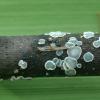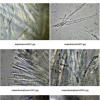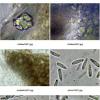
09-01-2026 17:41
Arnold BüschlenHallo, F. dilatata wird von vielen Bryoparasiten

10-01-2026 20:00
Tom SchrierHi all,We found picnidia on Protoparmeliopsis mur

07-01-2026 22:22
 Danny Newman
Danny Newman
Tatraea sp. on indet. hardwood The Swag, Great Sm

10-01-2026 01:18
 Danny Newman
Danny Newman
cf. Neovaginatispora fuckelii on indet. shrub Pre

07-01-2026 10:24
 Danny Newman
Danny Newman
Pezicula sp. on indet. hardwood Appalachian Highl

09-01-2026 10:08
 Blasco Rafael
Blasco Rafael
Hola, en el mismo habitat que la anteriorRetamaDia

08-01-2026 21:22
 Blasco Rafael
Blasco Rafael
Hola, He recogido esta muestra de Orbilia sobre Re

07-01-2026 17:29
 Marc Detollenaere
Marc Detollenaere
Dear Forum,On a barkless Populus I found some smal

10-11-2021 17:33
 Riet van Oosten
Riet van Oosten
Add-on topic http://www.ascofrance.com/forum/7059

07-01-2026 10:05
 Danny Newman
Danny Newman
cf. Chaetospermum on XylariaCosby Campground, Grea
 Bonsoir à tous,
Bonsoir à tous,Je pense reconnaître ici Mollisia hydrophila sur base de chaume pourri de roseau commun (Phragmites australis).
a) apothécies jaunissant au KOH
b) spores étroitement ellipsoïdes-cylindriques, avec microguttules : 8-10,5x1,5-2,8
c) paraphyses fourchues avec contenu réfringent ou nombreuses guttules
d) masses cristallines dans l'excipulum
Qu'en pensez-vous ?
Bernard


Thank you for the confirmation.
Bernard


Bernard

Following my posting of that thread Nick Aplin in the south of England emailed me - here is a part of that email:
"I've had three collections this year from separate sites in Sussex on Phragmites of what I assume is the same species as yours, but all three have differed only in the abundance of crystals; one had a few very large, irregular crystals, one had many smaller, 'envelope' shaped crystals and in one the crystals were apparently absent . . . . . . All three had the abundant subiculum and also a KOH- reaction. I have wondered whether a correlation can be made between these two characters (especially as all my collections on Phragmites without a subiculum have been distinctly KOH+)."
Chris


Hello,
in former years I have collected many times hydrophila s.l. on Phragmites and have made the same observations. The KOH reaction is sometimes clear to see, sometimes faint, sometimes absent - even in collections from the same location. A subiculum may be present or not. And the crystals may be absent too, although they are usually there.
All in common have the spore shape, which has one spore end blunt and the other pointed.
I have not realized molecular data on more than two collections, which both were quite typical, and which both fell together in the tree. It would be good to have these different collections to see wether it is one variablespecies or a species complex.
best regards,
Andreas

These are interesting results! I hope you have documented the two sequenced ones or noted their peculiarities to allow interpretation of further genetic results.
Zotto


